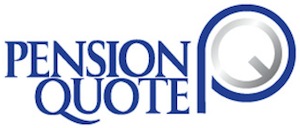Most of us are probably feeling bruised, battered, and confused in the heat of battle of this unprecedented election, with two diametrically opposed candidates duking it out to become leader of the free world. We are scrambling to choose wisely and pick a president who will do the best job—one who offers us a secure future—both personally AND financially.
We might be facing a conundrum on the financial side. If one camp wins— taxes will likely go higher than they already are. If the other one wins—you may not have any social security, or other forms of retirement benefits left in the near future. Neither option provides peace of mind.
Let alone the uncertainty of a jittery post-election stock market — who can predict if the bulls will rage or the bears will prevail? Either way—you pay. So, regardless of who gets sworn in at the January inauguration, the pressure is on us now to figure out how to mitigate future financial losses and protect our hard-earned dollars.
The obvious choices of tax deferred vehicles, which you probably have in place, rely upon one or more of the following sources for retirement income: 401(k) plan distributions, IRA/Roth IRA distributions, social security benefits, and pension plan payments. Pretty clear-cut but each of these sources carries their own tax consequence and funding limits which, in many cases are not desirable.
Those accumulated investment dollars provide you with tax deductions now but once you take it out—it might get taxed at a higher rate. It’s a “pay me now or pay me later” scenario. If you die, even your heirs will have to pay the piper because that money is income taxable. It’s a Catch 22 and the government always cashes in; when you reach age 70.5 you are forced to take minimum distributions from those accumulated dollars—on which you will pay taxes annually for the rest of your life.
What if I told you there is a little-known option that will help you grow those contributions tax-free? The reason you may not have heard about it is because even savvy money managers don’t fully understand it. In a recent article, “2 good reasons to move IRA funds to permanent life insurance,” Tax Advisor Ed Slott, hit the nail on the head when he writes that “clients want guarantees, growth, control, safety, protection, access, liquidity and low taxes.” He says the “sweet spot for transition funds from an IRA to permanent life insurance for clients is in their 60s.” Yes, yes, yes… right on all counts! Ed Slott article
But in extolling the virtues of this tax-free growth strategy, he cautions that the down side is that you give up the benefit of investing in the stock market. Respectfully, he is talking about using “Whole Life Insurance” and presumably doesn’t understand the major advantages of using “Index Universal Life.”
With Index Universal Life (IUL) contracts, the money you contribute personally will grow tax-free. You can choose not to gamble with your cash and accumulated money every year and only take a risk on the return—choosing from an abundance of indexes—low to high risk—but not risking the original principal.
The other up side of a life insurance policy versus other investment vehicles is that the death benefit passes to your beneficiaries, income tax free. It can even bypass estate taxes, if properly set up. There are many customizations that can be designed to fit your particular needs.
It’s simply called a Life Insurance Retirement Plans (LIRP) and adding it to your investment portfolio may be the perfect answer to counteract increasing tax rates and funding limitations. Policies are designed for cash accumulation and provide death benefit while acting as a supplemental retirement income source. In the event a client does not meet the eligibility requirements of a Roth IRA or the contributions limits are too low, a LIRP may be that Roth IRA alternative you are looking for.
A LIRP is characterized by the following:
- Premiums are paid with after-tax dollars
- Cash values grow tax-deferred
- Income can be distributed tax-free through the use of tax-free loans or withdrawals from the policy
- In situations where an employer funds the plan for him or herself, there are no employee costs
- Unlike a Roth IRA or 401(k) plan, there is no IRS limit on the amount of premium that can be contributed
- Additionally, the pre-retirement death benefit may address any shortfall in retirement income for a surviving spouse.
Intrigued? You should be. So, fellow voters don’t fret yet. I already cast my ballot and I’m sticking by that decision… for better or for worse. But remember, you do have some control whether it’s Mister or Madam President in the White House. You can take action now to make sure Uncle Sam doesn’t get any richer with your tax dollars. Ask us about LIRPS and IULs and see if you or your clients are good prospects. PensionQuote team members are available for webinars.
————————————————————————————————————
Eugene C. Gordon
CEO, PensionQuote Inc.
We encourage creative thinking among our PensionQuote executives… the kind of ‘outside the box’ strategies that our money manager partners have come to expect. That creativity and passion comes from our Sales and Marketing Managing Director on this #motivationalMonday! [email protected].

